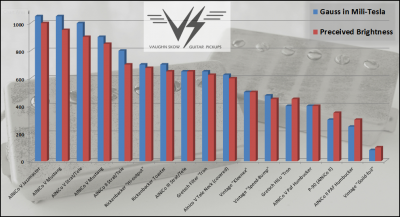SquierTap
Squier-holic
So, what's the deal with low gauss pickups? They're poppin up EVERYWHERE lately... ESPECIALLY in my Musiclily FB group... I read an article that basically said, the higher the gauss, the more magnetic pull the magnet has, and the brighter the pickup sounds... So, are all these low gauss pickups I've been seeing lately just aimed at people interested in a lower output "vintage" sounding pickup? I, personally love the bright, bell like tone of single coil Strat pickups, and I can't imagine why someone would want less brightness or highs...
Someone please inform me, here...
Someone please inform me, here...







